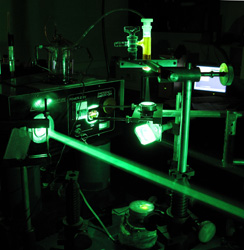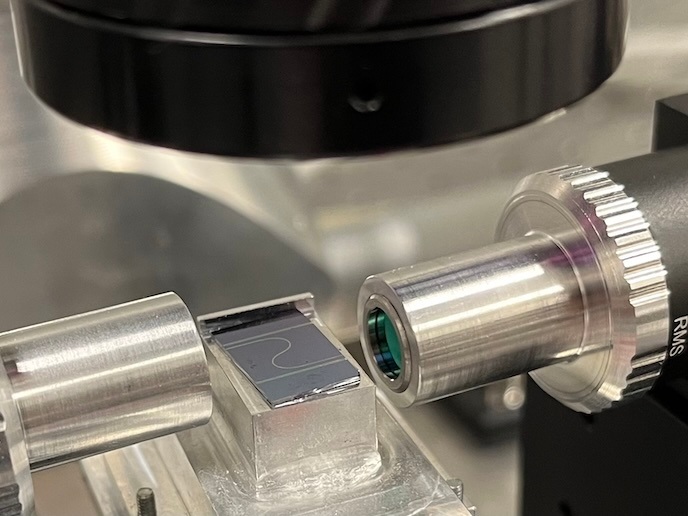Bright future for European laser technology
Laser diodes are semiconductor devices used in common devices like barcode readers and laser pointers. They currently have a restricted range of visible wavelengths which is holding back development of the sort of 'high-brightness' lasers needed in science and industry today The European project 'Nano-photonics materials and technologies for multicolour high-power sources' (NATAL) took up the challenge to develop new laser technologies that plug the 'green gap' and which could serve a host of other applications requiring brighter, specially tuned miniature lasers, from overhead beamers to factory production. NATAL's breakthrough tracks developments in novel semiconductor gain materials and the demonstration of advanced micro-optical elements needed for new lasers. Key to the success has been their work on optically pumped 'Vertical external-cavity surface emitting lasers' (Vecsel) - a kind of semiconductor diode laser (SDL) that produces a high-quality, high-power light beam. Partners in the project achieved several scientific firsts, including a record-breaking high-power visible light, and the first-ever use of blue laser diodes for direct optical pumping of red SDL material. One partner has developed an advanced 3D simulation tool that takes into account electro-optical and thermal properties of the gain chip but also the effect of external optical elements. Potential scientific and industrial uses for compact, mass-produced Vecsel-inspired lasers are many, including in medicine, display technologies, life sciences, and UV lithography. NATAL partner OSRAM Opto Semiconductors has reportedly been developing low-power, red-green-blue (RGB) projection technology. Another partner Epicrystals has commercialised its proprietary DeCIBEL technology, while the firm Toptica is working on scientific applications of semiconductor Vecsel technology in the near infrared. The collective work of the NATAL consortium and its various follow-up projects and activities, such as the EU-funded Fast-Dot integrated project, pave the way to a bright future in European laser research and technological development.







